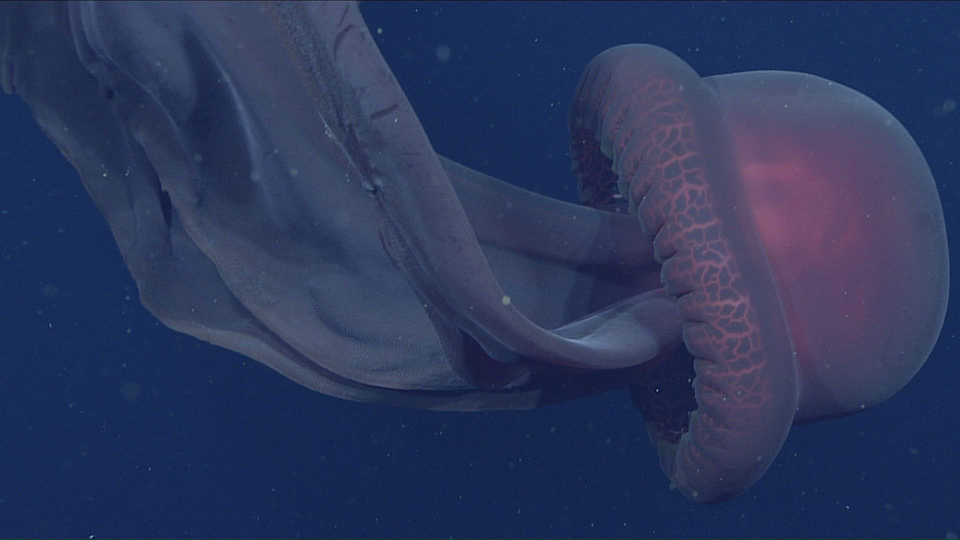The Chirodectes maculatus jellyfish is elusive. So far, there have only been two documented sightings of this particular jellyfish. Now, a group of divers from Scuba Kavieng have managed to capture this rare jellyfish on video. Many believe this video could be the first documented video recording of the Chirodectes maculatus.
Divers caught a rare jellyfish on video

The new video shows the rare jellyfish off in previously unseen detail. The video was captured off the coast of Papua New Guinea. In it, the jellyfish swims around, the four clusters of striped tentacles it sports floating freely behind it. Rings cover the jellyfish’s body, and a patch of red on its bell pulses with red.
Scientists believe this pulsing patch may be a digestive cavity. However, because sightings of this jellyfish are so rare, nobody can say for sure. The specimen was first discovered by researchers back in 1997. However, it wasn’t designated as its own genus until around 2005.
Unlike most jellyfish of this size and kind, the Chirodectes maculatus doesn’t appear to be venomous.
The new video of the rare jellyfish is something worth checking out. The divers who discovered it shared the video on the group’s Facebook page. The divers note that the jellyfish was around the size of a soccer ball and that it swam around “quite fast,” as noted by VICE.
Unfortunately, we could not share an image of the jellyfish here, as the creature has only been recorded twice in history, and there are no readily-available photos of this elusive creature.
More than meets the eye
Of course, as with any creature we haven’t recorded much, this rare jellyfish is more than meets the eye. As Dr. Allen Collins, a zoologist and curator for the Smithsonian Institue National Museum of Natural History explained to VICE that many of the species’ characteristics are internal. As such, you won’t be able to pick them all up from the video.
But that doesn’t make the outward appearance of this creature any less mesmerizing. The spotted and ringed appearance of its translucent bell is most notable. But the tentacles that follow behind it, and the pulsing red patch in its bell mean you won’t forget this rare jellyfish if you see it out in the wild.
In 1997, researchers caught the jellyfish. But they were reluctant to dissect it at the time, as it was a new discovery. Perhaps in the future, we’ll get more information about this beautiful and rare creature as scientists learn more about it. And, of course, there are plenty of other elusive jellyfish out there, too.
More sea coverage: The largest fish ever caught was identified in Portugal.








